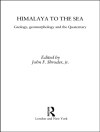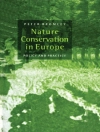The Water Science and Technology Board and the Board on Environmental Studies and Toxicology have released the seventh and final report of the Committee on Restoration of the Greater Everglades Ecosystem, which provides consensus advice to the South Florida Ecosystem Restoration Task Force on various scientific and technical topics. Human settlements and flood-control structures have significantly reduced the Everglades, which once encompassed over three million acres of slow-moving water enriched by a diverse biota. To remedy the degradation of the Everglades, a comprehensive Everglades Restoration Plan was formulated in 1999 with the goal of restoring the original hydrologic conditions of its remaining natural ecosystem. A major feature of this plan is providing enough storage capacity to meet human needs while also providing the needs of the greater Everglades ecosystem. This report reviews and evaluates not only storage options included in the Restoration Plan but also other options not considered in the Plan. Along with providing hydrologic and ecological analyses of the size, location and functioning of water storage components, the report also discusses and makes recommendations on related critical factors, such as timing of land acquisition, intermediate states of restoration, and tradeoffs among competing goals and ecosystem objectives.
Board on Environmental Studies and Toxicology & Committee on Restoration of the Greater Everglades Ecosystem
Re-Engineering Water Storage in the Everglades [PDF ebook]
Risks and Opportunities
Re-Engineering Water Storage in the Everglades [PDF ebook]
Risks and Opportunities
ซื้อ eBook เล่มนี้และรับฟรีอีก 1 เล่ม!
ภาษา อังกฤษ ● รูป PDF ● หน้า 140 ● ISBN 9780309547420 ● สำนักพิมพ์ National Academies Press ● การตีพิมพ์ 2005 ● ที่สามารถดาวน์โหลดได้ 3 ครั้ง ● เงินตรา EUR ● ID 7150191 ● ป้องกันการคัดลอก Adobe DRM
ต้องใช้เครื่องอ่านหนังสืออิเล็กทรอนิกส์ที่มีความสามารถ DRM












